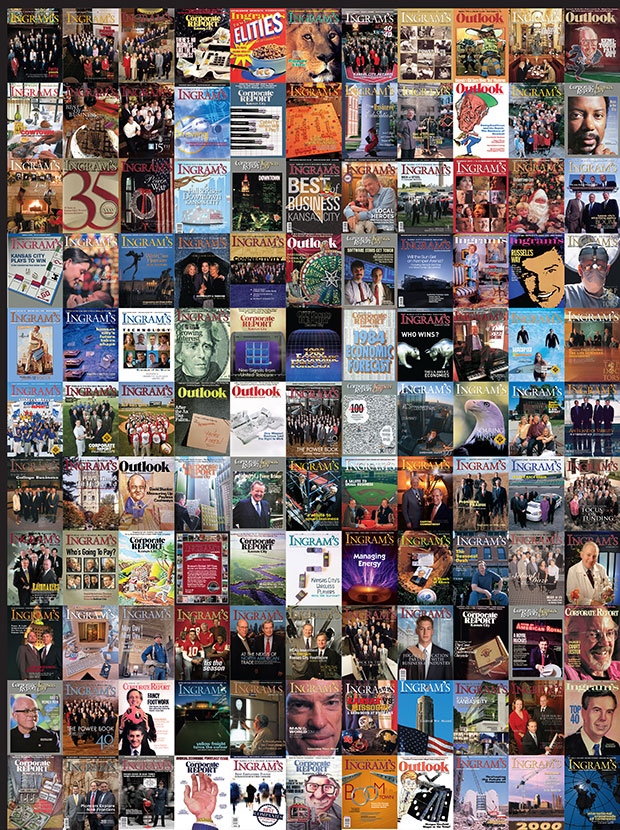HOME | ABOUT US | MEDIA KIT | CONTACT US | INQUIRE
HOME | ABOUT US | MEDIA KIT | CONTACT US | INQUIRE

That’s life in business in these United States. The companies that stood still became data points on the wrong side of SBA charts about business life expectancies. Even today, more than half the companies launched in this country fail to make it past a fourth year in business. That dynamic affects the small and the large alike: In the 1920s, the average listing lifespan of a company on the S&P 500 was 67 years; today, it’s just 18 years.
And yet, through the churn, with new businesses stepping up to replace the failed, the U.S. economy has become the engine that drives growth around the planet.
We at Ingram’s are proud to count ourselves among the longer-term survivors. Like them, we know that the model that ushered us into existence four decades ago must change. As we continue to move toward that goal, with new revenue models, new on-line platforms and new products, it’s worth taking a few minutes to assess how both Ingram’s Magazine and Kansas City itself have changed over the years.
This month’s issue does that, celebrating the formula that has kept us going: Providing timely and in-depth analysis of the trends, businesses and people who have contributed the most to business growth and economic advancement in the greater Kansas City area for the past 40 years. While taking note of the historical high points, we’ll also highlight some of the present, and peek over the horizon at what might be coming our way as a business community.
From its founding in the post-Watergate years, Ingram’s has been there to chronicle business developments, both positive and negative, over the terms of six presidents. Born just after the end of one recession in the mid-70s, we’ve witnessed the impact of severe downturns in the early years of the ’80s, ’90s and ’00 decades, as well as the Big One that hit in 2007. But we’ve also brought you incisive reporting on how the booms have
played out in Kansas City through most of the 1980s and 1990s. And (for too long, we’re sad to say) we’ve been exploring what it will take to get us back to those growth levels since the 2001 recession and the decade of economic underperformance we’ve endured since then.
Up or down, though, Kansas City has moved forward. The impressive building boom of the ’70s produced some structural icons for this region, from a new international airport to a world-class sports complex, from a new convention center and an arena that would lure a presidential nominating convention
to such staples of commerce as Crown Center, Corporate Woods, Oak Park Mall and the I-435/I-29 business corridors.
We’ve seen the total transformation of the way news and information is delivered, with global access via the Internet and cable TV supplanting what we used to get from a comparatively paltry menu of local TV and radio stations available in the mid-’70s. And Ingram’s Magazine has filled a void in business news reporting created by the merger of two daily newspapers into one, then the slow decline in circulation that has crippled The Star, an institution once considered indispensable to the region.
If you run the timeline backward, and get to the moment of conception for Ingram’s, you arrive at one Ludwell G. Gaines III, who launched the forerunner publication then known as Outlook. His vision for the magazine was rooted in his optimism for what this region was about to achieve: “I believe,” he wrote in that inaugural issue, that “Kansas City is entering an exciting and promising new era, an era of planned growth and a new dynamic spirit. Outlook is a new publication intended to report on, and to be a forum for, the Kansas City economic community. I believe that our approach to business journalism has never been more relevant and in demand than right now.”
And he was right. Over the years, ownership of the magazine has changed, publishers came and went, Outlook became Corporate Report within six years of its launch then eventually Ingram’s in 1989. But the values and mission established in that very first edition so many years ago have remained consistent. That consistency was, in a sense, a torch that burned with a common vision and purpose, one passed from publisher to publisher—from Gaines to Allan Duerr, then to Kate Glazer, Stephen Hedlund, William Toevs, Richard Kappa, Woody Overton and Bob Ingram, and borne today by the current owners, Joe and Michelle Sweeney.
In these pages, Ingram’s current staff presents reminders of where Kansas City has been, assesses how far we’ve come together, and looks at where we might be going over the next 40 years. We’re confident that the region’s future will indeed be bright—if. If we can use a bottle to capture the same lighting that turned us into a Downtown-centered economy four decades ago into one that stretches from the Kansas Speedway in the west, to the Independence Events Center and beyond in the east; from the longstanding success of southern Johnson County on the Kansas side, to the roster of huge private and public concerns near the airport in the north, on the Missouri side.
All of that is built around a solid core that has been reborn over the last decade of those 40 years, a Downtown consistently praised as being truly world-
class as an entertainment venue and a tourist draw.
That, ladies and gentlemen, is what Ingram’s has celebrated for four decades, and why we’re so optimistic about the next 40. If you’re finding it hard to be just that optimistic, we invite you to carefully study the following pages. In them, we believe, is the source of that optimism, and we hope you’ll join us in savoring it.